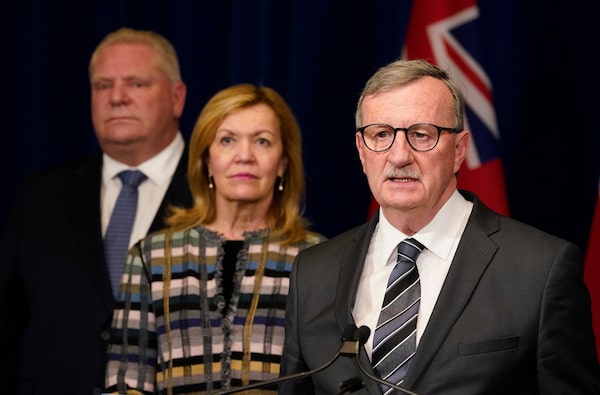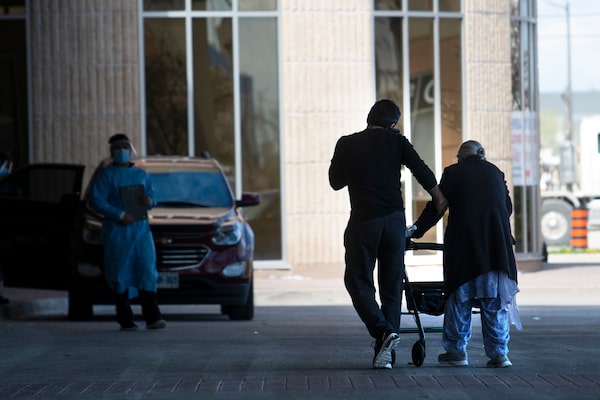Editor’s note: This week’s Coronavirus Update is our final issue. What started as a pop-up newsletter in March, 2020, became a daily, then weekly digest to keep Canadians informed about the state of the virus across the country, new variants and, as the pandemic eased, how industries were recovering. Thank you for subscribing – we hope the newsletter satisfied your need for COVID-19 coverage. The Globe will continue to publish stories about the virus and pandemic fallout, and you can select “Follow” at the top of our Coronavirus topic page to receive articles in your personal news feed.
In our last missive, health reporter Kelly Grant reflects on her experience covering COVID-19, and we share our latest reporting on the impacts of long COVID. If you’d like to get in touch, you can reach us at audience@globeandmail.com.
I have a vivid recollection of the night Canada confirmed its first case of what was then known as 2019-nCoV, the coronavirus that would go on to kill more than 6.8 million people (and counting) around the world. It was Saturday, Jan. 25, 2020, and the news release landed while I was hanging out at my sister’s place. I fished my laptop out of my trunk, tuned in to a virtual news conference at the Ontario Legislature, and filed a story with my Queen’s Park colleague Laura Stone.
Looking back more than three years later, that news conference seems deeply bizarre. Half a dozen officials sat shoulder-to-shoulder, maskless. Two days later I wrote about the run on N95 masks at Toronto hardware stores, and quoted one of those maskless officials, Ontario’s then-chief medical officer of health, David Williams. “We never recommend wearing a mask in public,” he said. The risk to Canadians remains low, Dr. Williams and other public-health leaders kept saying, repeating the reassurance like a mantra.

At a news conference on March, 17, 2020, Ontario's chief medial officer of health Dr. David Williams, Premier Doug Ford and Health Minister Christine Elliott declare a state of emergency for the province.Frank Gunn/The Canadian Press
Revisiting those clips felt like watching the opening scenes of a horror movie whose grisly ending I’d already seen. Everyone was naïve to the terrors ahead, me included. Soon I would be writing about COVID tearing through nursing homes and intensive-care units; about schools being closed for far too long; about the ill effects of shutting down non-COVID medical services; about nasty new variants arising every time we dared hope the virus would let up.
As the pandemic ground on, we on the health team tried our very best to separate COVID fact from fiction, speaking almost daily to researchers, public-health officials, doctors, and other health workers on the frontlines. Our newsroom also looked for good news in the sea of bad, profiling the health workers who risked their lives to care for the infected, the scientists who developed life-saving vaccines and the ordinary Canadians who banded together in the days before fights over mandates, masks and misinformation drove so many of us apart.
Today, life has mostly returned to normal, including on The Globe’s health desk. That’s why we’ve decided to bring our coronavirus newsletter to a close. The pandemic isn’t over, but it’s no longer a national emergency, and for that I’m grateful. It’s time to focus on other health stories of vital importance to Canadians.
– Kelly Grant, national health reporter
Pandemic recovery
Laurie Woelfle, 61, who has long Covid, visits with her special needs 23-year-old twins Nick, left, and Jake, at their home in Calgary, on March 9.Leah Hennel/The Globe and Mail
What Globe readers want you to know about living with long COVID
As the coronavirus pandemic enters its fourth year, The Globe asked readers living with long COVID to share their experiences. More than five dozen people told us how the condition has affected their lives – from their ability to work to how it’s changed their social and family life – and what they wished Canadians understood better about long COVID.
At a virtual long-COVID clinic, patients across Ontario access care and find support
A virtual clinic in Ontario is helping connect the vast and growing number of long COVID patients with strategies to assist in managing their often-debilitating symptoms.

An elderly woman is helped to the entrance to the COVID-19 test centre at the Embassy Grand Convention Centre in Brampton, on May 6, 2021.Fred Lum/The Globe and Mail
In the cities hardest hit, care for Canadians with long COVID is scarce
Brampton, Ont., was one of the Canadian cities hit hardest by COVID. Winnipeg and Regina, too, had high infection rates. And yet, the number of publicly funded long COVID clinics in these places, and many others across the country that saw large case counts, is zero. Although the existence of long COVID is well established, specialized care for sufferers is scarce.
Why isn’t everyone being offered a COVID booster this spring?
Unlike previous vaccination campaigns, which were open to the general population, the next round of shots will probably be limited to people at risk of developing severe disease if they become infected.
Small business groups push for extension to repay outstanding CEBA loans
Small-business groups are asking the federal government to further extend the deadline for repaying Canada Emergency Business Account loans, the first and most widely used pandemic support program for businesses. Almost three years after the program began, most of the loans are still outstanding.
Subscribe to the Morning Update newsletter for news briefs on the day’s most important stories as selected by and written by Globe editors.